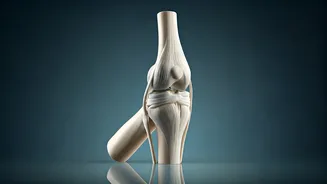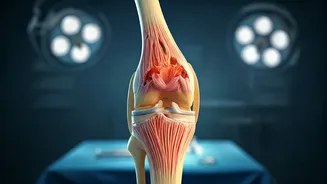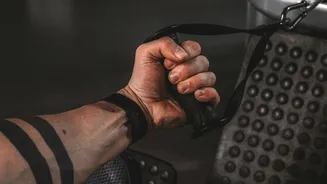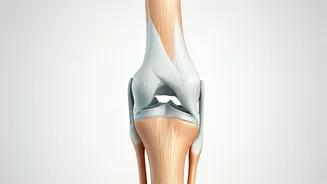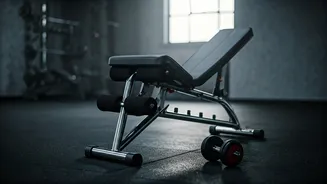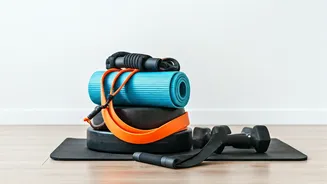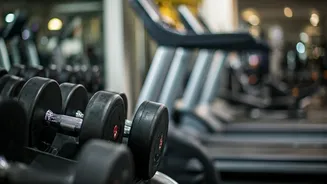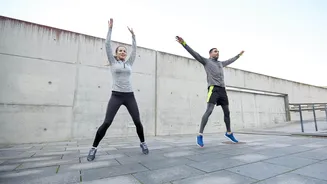Behind-the-Head Exercises
Pressing or pulling weights behind the head might seem like a way to increase motion range, but it often makes the shoulder unstable. This position puts
the shoulder in an externally rotated and abducted position, which increases the stress on the joint. The rotator cuff, which is crucial for maintaining shoulder alignment, is especially vulnerable in such positions. Because of this, it has to work extra hard to stabilize the joint. Many people do not have the flexibility needed in their upper back to safely do behind-the-neck exercises. This can cause the head to move forward and put more strain on the neck. Front-based exercises allow the shoulder blade to move freely, reducing the risk of injury. These exercises are a better way to build strength while still being good for the upper body.
High-Impact Jumps
Performing high-impact jumps on hard surfaces can be tough on your joints. When landing, the force is amplified through your ankle, knee, and hip. Repeated high-impact activity makes the cartilage wear down faster, especially if landing mechanics are incorrect or fatigue sets in. Softer surfaces, good landing techniques, and proper shoes distribute force better. This helps keep your joints healthy for a long time. Giving your cartilage time to heal between high-impact sessions also helps it adapt. When done properly, plyometrics can still be a good training tool without hurting your joints.
Kipping and Sloppy Lifts
Exercises that rely on momentum, rather than controlled muscle use, can put a lot of stress on your shoulder and lower back, especially if you lack strength or coordination. Fast, high-force moves increase the stress on these vulnerable areas. When doing kipping pull-ups, the swinging motion repeatedly puts the shoulder in awkward overhead positions, which can irritate soft tissues. Similarly, poor Olympic lifting form can twist your spine abruptly as you lift. Slowing down your exercises and focusing on building strength before speed allows your muscles to absorb force more steadily, which reduces the chance of joint injury.
Heavy Straight-Leg Deadlifts
Straight-leg deadlifts, often done to target hamstrings, can shift the load to your lower spine if performed with too much weight or poor hip flexibility. When your lifting form is compromised, it can lead to increased spinal loading, particularly when the lower back loses its natural curve under tension. Without proper hip hinge mechanics, the exercise becomes more back-focused. This increases the risk of back issues. Controlled hinge variations, such as Romanian deadlifts with a neutral spine, strengthen the hamstrings and gluteal muscles rather than the spinal structures. This approach maintains spinal health and reduces cumulative strain.
